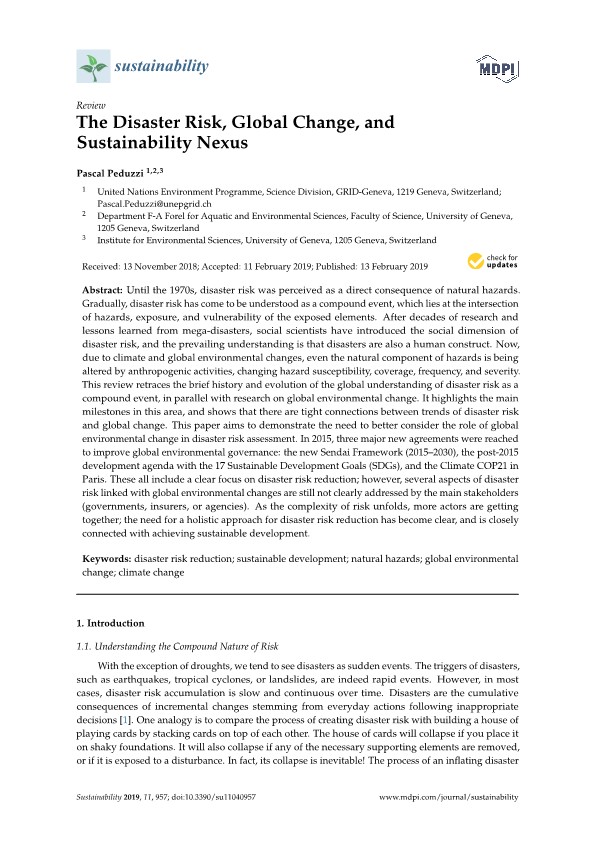Resource
The Disaster Risk, global Change, and Sustainability Nexus
Description
Until the 1970s, disaster risk was perceived as a direct consequence of natural hazards. Gradually, disaster risk has come to be understood as a compound event, which lies at the intersection of hazards, exposure, and vulnerability of the exposed elements. After decades of research and lessons learned from mega-disasters, social scientists have introduced the social dimension of disaster risk, and the prevailing understanding is that disasters are also a human construct. Now, due to climate and global environmental changes, even the natural component of hazards is being altered by anthropogenic activities, changing hazard susceptibility, coverage, frequency, and severity. This review retraces the brief history and evolution of the global understanding of disaster risk as a compound event, in parallel with research on global environmental change. It highlights the main milestones in this area, and shows that there are tight connections between trends of disaster risk and global change. This paper aims to demonstrate the need to better consider the role of global environmental change in disaster risk assessment. In 2015, three major new agreements were reached to improve global environmental governance: the new Sendai Framework (2015–2030), the post-2015 development agenda with the 17 Sustainable Development Goals (SDGs), and the Climate COP21 in Paris. These all include a clear focus on disaster risk reduction; however, several aspects of disaster risk linked with global environmental changes are still not clearly addressed by the main stakeholders (governments, insurers, or agencies). As the complexity of risk unfolds, more actors are getting together; the need for a holistic approach for disaster risk reduction has become clear, and is closely connected with achieving sustainable development